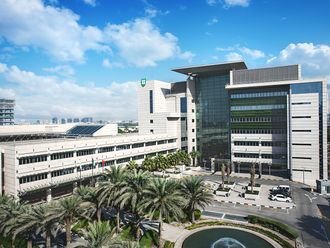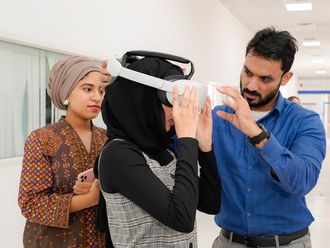Medical experts from Dubai Health Authority’s Innovation Centre have collaborated with Sinterex, an additive manufacturing healthcare specialist firm, to bring 3D printing to the point-of-care at DHA for hospitals — Rashid, Latifa, Dubai and Hatta Hospital.
The newly opened 3D Printing Lab located at the DHA’s Innovation Centre provides medical professionals at DHA with patient-specific anatomical models allowing them to conduct detailed pre-operative analysis and to improve patient communication.
The workflow starts with patient data acquisition, typically from a CT or MRI scan. This patient data is then brought into medical image segmentation software, which allows the physician to isolate the specific anatomical region of interest. This digital model is then converted into a 3D-printable file and produced using the state-of-the-art 3D printers in the lab.
Dr Farida Al Khaja, CEO of Medical Support Services and Chair of Medical Innovation Council at DHA, explained that this initiative in is line with DHA’s vision of incorporating latest medical technology in the health sector with a primary aim to better patient care. Additionally, technology also helps improve efficiencies and reduce costs.
Complex cases
Dr Al Khaja said this initiative in particular will help DHA medical professionals achieve greater surgical success, especially for complex cases.
She explained that the lab is an important milestone in the execution of the DHA’s 3D Printing Strategy, which focuses on deploying the latest technologies to improve patient outcomes and support the healthcare ecosystem of Dubai to excel in difficult medical surgeries.
Sinterex has deployed its biomedical engineers to operate the 3D lab. Julian Callanan, Managing Director, explained that by having the biomedical engineers on site and working side-by-side with medical professionals, a boost in communication and cooperation reduces the time taken to develop the final 3D model.
Mai Al Dossari, Director of DHA’s Health Innovation Centre, said, “This is the first major project in the Innovation Centre since its inauguration. The 3D Lab has been involved in supporting DHA’s surgeons in successfully planning and achieving complex surgeries. The cardiology team at Rashid Hospital used 3D models to pre-operatively plan and test the fitting of trans aortic valve implants. The maxillofacial team have produced models of patients’ jaws and skulls and took these into surgeries for visual reference and intra-operative monitoring.
“At Hatta Hospital, the orthopaedics department has been printing knees and shoulders to support planning for reconstruction surgeries.”
Cost saving and efficiency benefits
Not only is the initiative good for patients but recent research also shows the commercial benefits to bringing 3D printing to the point-of-care.
A recent study published in September by Academic Radiology estimated that hospitals using anatomical models could save more than $3,700 (Dh13,588) per surgery by reducing time spent in the operating theatre. The authors reached their conclusions by analysing more than 30 different studies related to 3D models used in orthopaedic and maxillofacial surgery. Based on that review, they estimate that anatomical models could shorten surgery time by around 62 minutes on average.
Dr Mohammed Al Redha, Director of Project Management Office and Informatics and Smart Health at DHA, says, “This is an important strategic step for the DHA. It is also a further example of how DHA is integrating 3D Printing into its day-to-day workflows to secure better results for its patients.”
According to Gartner, a leading research and advisory company, in 2018, nearly 3 per cent of large hospitals and medical research institutions had 3D printing capabilities on site.
Dr Al Redha says, “We are truly proud that we have been able to successfully integrate this technology in our workflows.
“Having a 3D printing lab in a DHA facility means that we can produce patient-specific 3D printing models especially needed for complicated surgeries. This initiative is in line with the vision of Dubai’s strategy to become a global 3D printing technology hub by 2030.”












